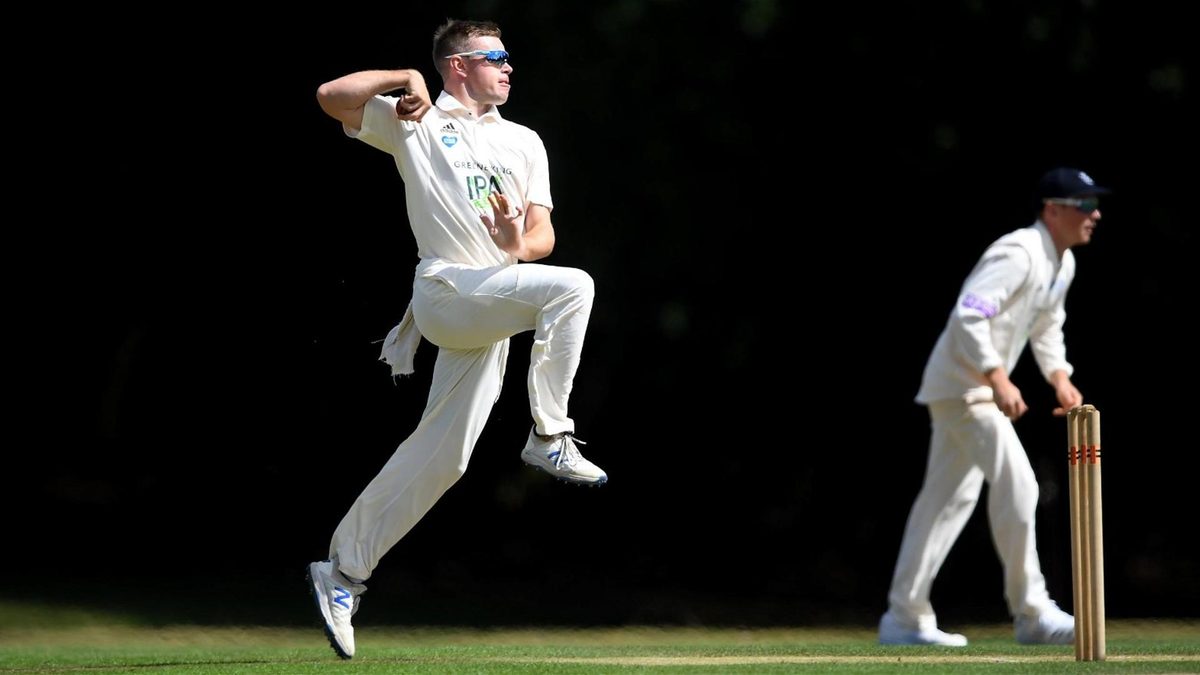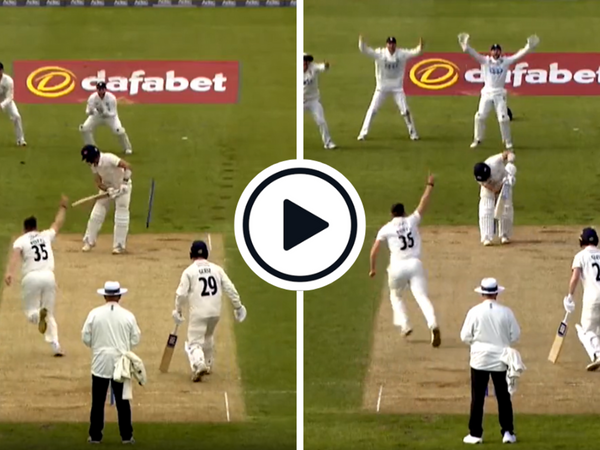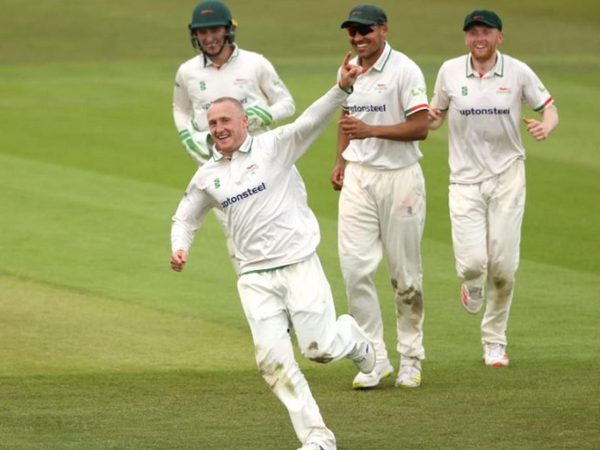
Still only 24, Mason Crane’s star is on the rise again after an encouraging campaign last summer was followed by a winter away with England. He talks to Wisden Cricket Monthly magazine editor Jo Harman about scrapping for opportunities, spinning it big and drawing inspiration from Adil Rashid.
It’s a little over three years since Mason Crane was handed his Test cap at Sydney in the dying embers of an Ashes series. Like Scott Borthwick four years earlier at the same venue, Crane – who at 20 years and 320 days became the youngest specialist spinner to debut for England since 1928 – was a greenhorn leggie selected more in hope than expectation; the last-man-standing after weeks of Australian dominance had sapped the life out of the tourists.
Borthwick, who has recently returned to captain Durham after four seasons at Surrey, has bowled only occasionally in the seven years since his solitary Test cap, remodelling himself as a durable top-order batsman. And Crane has similarly found overs hard to come by following his first, and so far only, Test outing, stress fractures of the back and seam-dominated selections restricting him to 10 first-class appearances for Hampshire across the last three summers.
Even when he has played, he’s been used sparingly. Heading into this season, Crane had bowled 168 overs for his county in first-class cricket since the start of 2018. To put that in context, Essex’s champion spinner Simon Harmer bowled 257 overs last summer alone, in just six matches. Leg-spin is a tough art to master; it’s even tougher when opportunities are so scarce.
Crane’s red-ball prospects had looked particularly bleak when Hampshire announced the signing of Nathan Lyon in November 2019, but Covid scuppered the deal and provided the 24-year-old with an opportunity to remind us of his talent. He seized his chance, taking 14 wickets at 13.57 in the Bob Willis Trophy and earning an international recall of sorts as he provided back-up for England’s spinners on the tours of Sri Lanka and India.
“I was really happy with how it went,” says Crane of last summer, speaking to Wisden.com on the eve of the new season. “It was quite refreshing for me, getting that chance and the freedom to just turn up and bowl. I got to bowl in August a lot of the time, and that was really nice. In pretty much every game I was the only spinner, so I had a lot of responsibility and I really enjoyed that role. I feel that moved me on as a player.”
Crane admits to feeling “frustrated” when Hampshire dipped into the market to sign the most prolific off-spinner in Australia’s history but, given his injury troubles, he understood the club’s reasoning at the time. Now, after rediscovering the kind of form which saw him fast-tracked into England’s T20I side in the summer of 2017, claiming AB de Villiers as his first victim, he’s made it clear to his employers that he needs to be playing.
“I’ve had some discussions about it and I’m pretty confident I’m going to play a fair amount,” he says. “I don’t want to sit on the sidelines for over half the games each year. I want to be playing cricket and I’ve made it pretty clear that’s my stance. The England hierarchy have said I need to be playing, so hopefully I get enough games under my belt this year and I can really move on.”
The early signs have been positive. Crane took six wickets in Hampshire’s innings win over Leicestershire to open the season – no mean feat for a leg-spinner in glacial early-April conditions – and is feeling the benefits of an intensive winter with England, even if his work was restricted to the nets.
“Your standards are driven higher by being around those Test match players. The spinners worked almost as a team on our own and bumped ideas off each other. It was really interesting to watch [the series], and I enjoyed seeing how all the different spinners on show went about their business. I got to see Ashwin in the flesh doing his thing, and the small changes he makes and what a clever bowler he is.
“As a leg-spinner you’re always striving for more consistency and that’s what Test cricket is mainly about – the amount of balls you can land in a really good area and then having the skill on top of that to change the spin and the flight.”
Whirling away alongside Crane in England’s bubble was Matt Parkinson, another young leg-spinner who has found match-time hard to come by at both domestic and international level. As direct contemporaries (Parkinson is six months older than Crane) who both spin the ball from the wrist, they are likely to be competing for one spot in the years ahead, but Crane is keen to emphasise how different they are as bowlers.
“I’d say I’m more about spin on the ball and spinning it both ways. Parky is much more [about] drift and accuracy, and he’s got a really good slider. We’re both releasing the ball in a similar way but how we’re going about it is different. That’s one of the beauties of leg-spin; there’s no right or wrong. There’s an unlimited possibility with it.”
Crane says it was “reassuring” to have Parkinson for company over the winter, as “someone experiencing what you are going through”. Much has been made, and rightly so, of the mental strain the bubble environment has put on England’s established group of players, with several given leave of absence over the course of the winter. But spare a thought for those on standby, such as Crane, Parkinson and Gloucestershire’s James Bracey, who spent month after month honing their skills in the nets, waiting for a chance they knew probably wouldn’t come, with nothing to distract them from cricket other than Call of Duty or a game of cards. Crane insists he was grateful for the experience though, recognising it as a stepping-stone on his path back to international cricket.
“Sydney feels like a lifetime ago, really,” he says of his Test debut. “So much has happened since. I still look back on it with great fondness. I’ve had a taste of Test cricket and my goal ever since has been to get back to that level.”
Crane acknowledges that for an English leggie to feature much in Test cricket, “a lot of those matches are going to have to be away [from home]”, and Jack Leach appears to have the spinner’s spot wrapped up for the foreseeable after his admirable performances in the subcontinent. But a recall to the white-ball set-up feels within reach, particularly with the T20 World Cup taking place in India later this year and England seemingly reluctant to put their faith in Parkinson as the third spinner behind Adil Rashid and Moeen Ali.
Crane’s record in the shortest format at domestic level – while not quite as outstanding as Parkinson’s – is excellent, with 42 wickets from 37 matches and an economy rate at just a touch over seven. And, crucially, like Rashid and most of the elite white-ball leg-spinners, he’s as comfortable bowling a googly as he is a leggie, making him that much more difficult for batsmen to line up.
“I’ve always bowled a googly,” he says. “It may even have come first. Being able to spin the ball both ways was what set me on my way. You don’t have to bowl googlies all the time but having it there and being confident in it is a big weapon in itself.”
And on Rashid, England’s world-beater: “He’s the best in the world at white-ball cricket. That’s no fluke. He’s a phenomenal bowler and he’s clearly worked really hard at his game. Every leg-spinner is different and I’m never going to bowl exactly like he does. But I can definitely draw inspiration from him. He’s at the sort of level I want to get to when I’ve reached my best.”
It’s worth remembering that Rashid was 27 or 28 by the time he reached that level. Having been discarded in his early 20s, it was only when Eoin Morgan took over the captaincy in 2015 and gave Rashid his full backing that England began to reap the benefits.
At 24, time is on Mason Crane’s side. It’s been a treacherous path so far, but it was ever thus for tyro leggies. The troublesome back is strong, the ball is leaving the hand as he would like again. Now what he needs is a show of faith.








